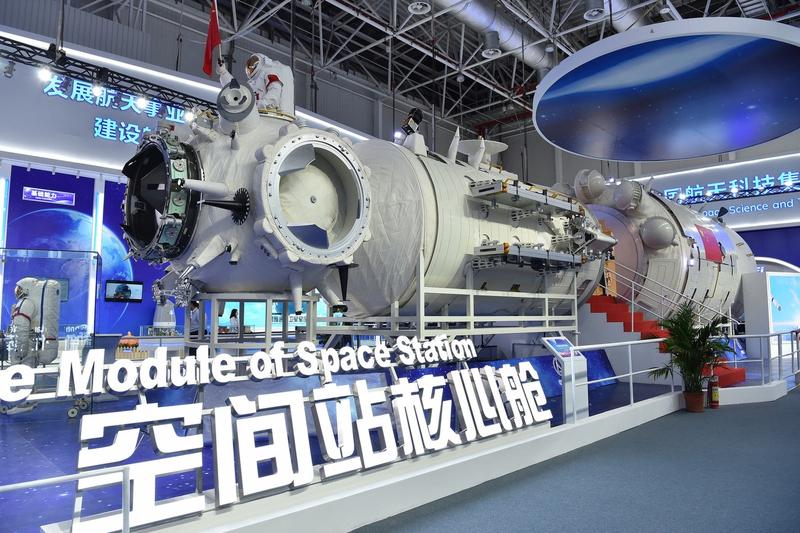
Photo taken on Nov 5, 2018 shows a full-size model of the core module of China's space station Tianhe exhibited at the 12th China International Aviation and Aerospace Exhibition (Airshow China) in Zhuhai, South China's Guangdong province. (PHOTO / XINHUA)
Three major components of China's space station program have passed technical and quality assessments and are ready for upcoming missions, the China Manned Space Agency said.
Experts from the agency, the Chinese Academy of Sciences and China Aerospace Science and Technology Corp reviewed the design, construction and test reports on the space station's Tianhe core module, the Tianzhou 2 cargo spaceship and the core scientific capsule, the agency said in a statement on Thursday.
It will be central to the space station's operations, given that astronauts will live there and control the entire station from it. The module will also be capable of hosting scientific experiments
Sources close to the agency said the components will be transported to the Wenchang Space Launch Center in Hainan province and launched into space in the coming months.
China will start assembling its first space station this year, according to government plans. Major stages of the program include: a Long March 5B flight this spring tasked with transporting the station's core capsule into a low-Earth orbit; two astronaut missions to prepare the capsule for other components; and two robotic cargo flights to deliver supplies.
The core capsule, named Tianhe, or Harmony of Heavens, will have three parts-a connecting section, a life-support and control section and a resources section.
It will be equipped with three docking hatches for manned and cargo spacecraft and two berthing locations to connect with space laboratories. There will also be a hatch for astronauts to use for spacewalks.
ALSO READ: China's spacecraft brings home moon samples
The core module will be 16.6 meters long with a diameter of 4.2 meters. It will be central to the space station's operations, given that astronauts will live there and control the entire station from it. The module will also be capable of hosting scientific experiments.
Once it becomes fully operational around 2022, the multimodule Chinese space station, called Tiangong, or Heavenly Palace, will have three main components-the Tianhe capsule and two space labs-with a combined weight of more than 90 metric tons.
READ MORE: 18 reserve astronauts picked for China's manned space mission



